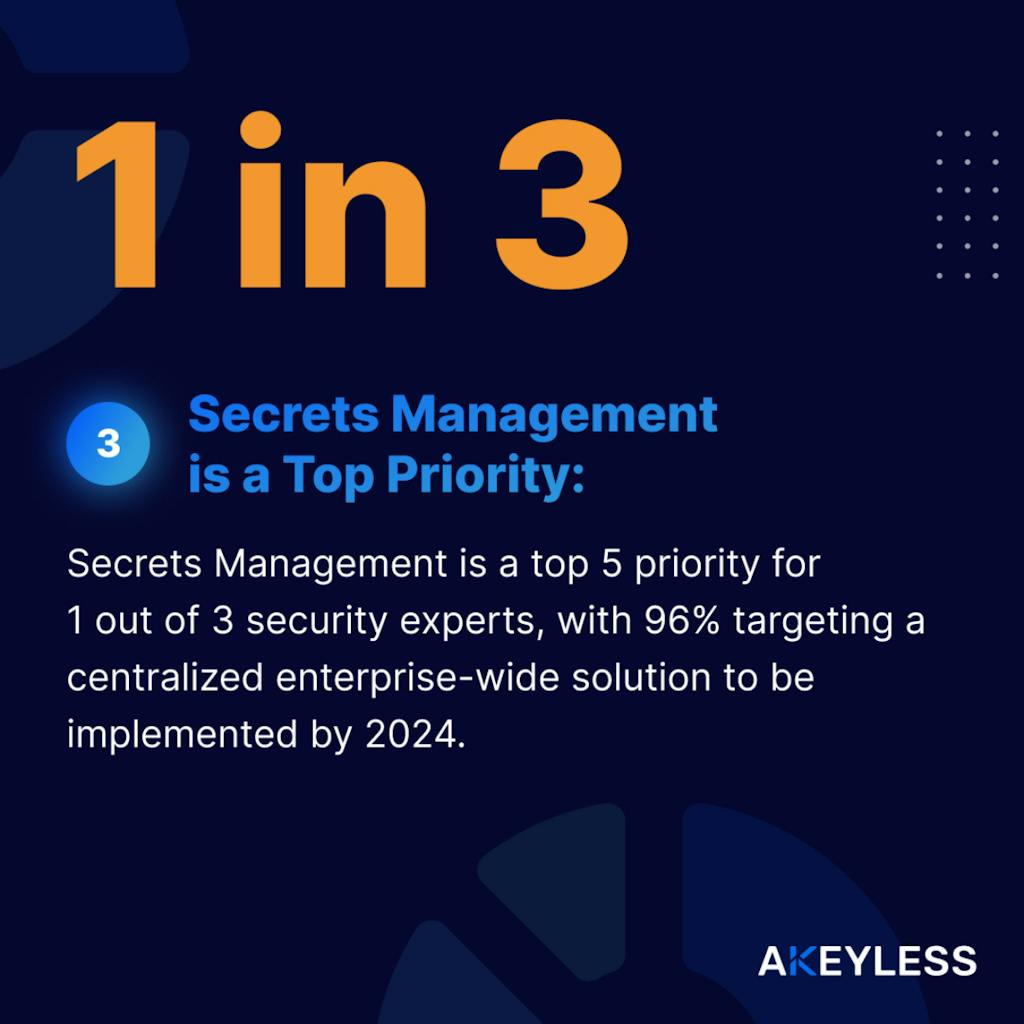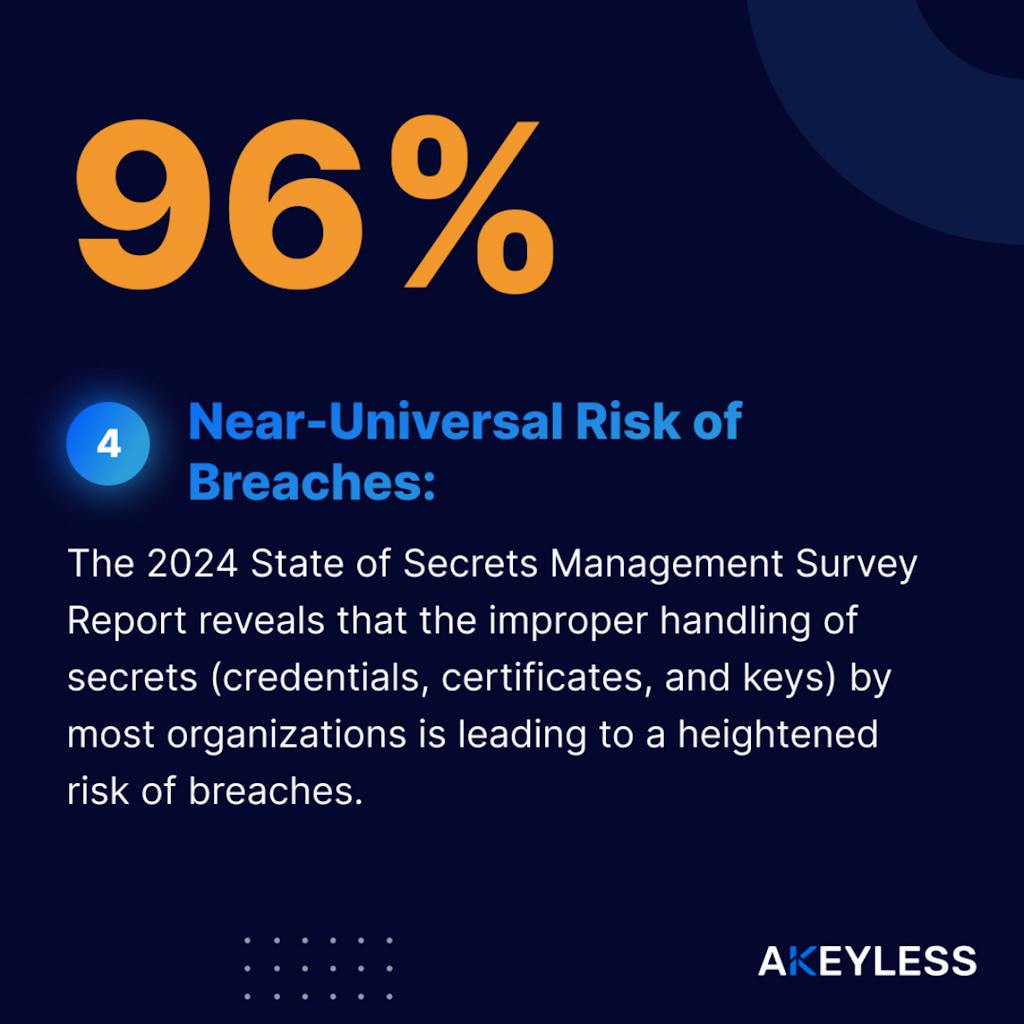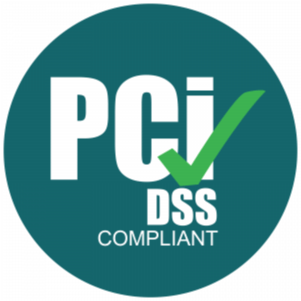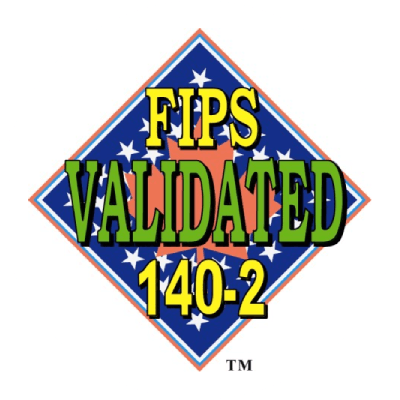Posted by Joyce Ling
July 1, 2023
Navigate secrets management with our comprehensive “Essential Guide to Secrets Management,” and get you up to speed quickly on this critical aspect of modern cybersecurity. Discover the definition of secrets management and the what, why, and how of managing secrets; from the risks involved to the best practices for safeguarding secrets.
This guide also offers an insightful comparison of leading secrets management solutions, including Akeyless, HashiCorp Vault, Azure Key Vault, Google Secret Manager, and AWS Secrets Manager, helping you make informed decisions for your organization’s security needs.
What Is Secrets Management?
Secrets management refers to the practices and tools used to secure, control access to, and manage the lifecycle of sensitive digital credentials and keys, commonly referred to as secrets. These secrets can include tokens, passwords, certificates, API keys, and other types of sensitive credentials that determine access to machines and processes.
In order to truly understand the importance of secrets management, it’s essential to understand the concept of machines and machine identities. Machines, in the context of IT and cybersecurity, refer not just to physical hardware like servers or network devices, but also virtual machines, containers, service accounts, microservices, and APIs—essentially, any non-human actor in the digital ecosystem that processes, stores, or transmits data.



What is Effective Secrets Management?
Effective secrets management is a now a cornerstone of cybersecurity. It plays a pivotal role in safeguarding confidential data, preventing unauthorized access, and ensuring adherence to regulatory compliance. Make sure your secrets management tools and practices cover these basics of best practices.
✔ Protecting Confidential Data
Secrets management is vital for securing sensitive information such as customer details, intellectual property, and financial records. By implementing stringent secrets management protocols, organizations ensure that this confidential data is stored securely and accessed only by authorized entities, thereby maintaining information integrity and trust.
✔ Preventing Unauthorized Access
Robust secrets management is key to shielding systems and data from unauthorized access, which can lead to severe consequences like data breaches, financial losses, and reputational harm. Effective management of secrets is essential in mitigating these risks, safeguarding not just data but also the organization’s reputation and financial health.
✔ Maintaining Regulatory Compliance & Standards
Adhering to data protection laws like GDPR and HIPAA is non-negotiable in today’s regulatory landscape. Secrets management plays a crucial role in meeting these compliance requirements and industry standards, such as SOC 2 Type II, by meticulously tracking and logging access to sensitive information. This commitment to compliance underscores an organization’s dedication to data security and confidentiality.
✔ Ensuring Overall Security
Integrating secrets management into the broader security strategy enhances an organization’s defensive posture. It complements security measures like firewalls and encryption, providing a vital layer of defense against data breaches and cyber threats, thus fortifying overall cybersecurity resilience.
Prioritizing secrets management is not just a strategic move; it’s a fundamental necessity in today’s interconnected world.
What Are Secrets? Definition and Guide
In the context of Information Technology, “secrets” refer to sensitive data that, if compromised, could lead to unauthorized system access. They serve as the keys to the kingdom, so to speak, granting access to valuable resources within an organization’s IT infrastructure.
Six common secrets in cybersecurity
- Passwords: Passwords are authentication credentials used to verify the identity of a user or system and grant access to specific resources or accounts. These could be for user accounts, admin interfaces, and databases, among other things.
- API Keys: API keys are used to authenticate and track API usage, often to grant access to external resources and services.
- SSH Keys: SSH keys are cryptographic keys used for secure remote access and authentication. They work by generating a unique pair of keys—a public key and a private key—where the public key is shared with remote servers and the private key is securely stored on the user’s device. This key pair enables encrypted communication and secure logins between the client and server.
- Tokens: Tokens, such as OAuth tokens, are temporary access credentials used for secure authentication and authorization. They facilitate trust and secure communication between entities, commonly employed in identity and access management systems, APIs, and web applications.
- Certificates: Certificates, particularly SSL/TLS certificates, are digital documents that verify the identity of individuals, systems, or websites and enable secure and encrypted communication between them.
- Encryption Keys: Encryption keys are cryptographic keys used to protect sensitive data by encrypting and decrypting it, ensuring confidentiality and data security.
What is the difference between a credential and a secret?
While both credentials and secrets provide access to systems, there is a clear difference between the two.
Credentials
Typically encompass both employee access and machine access, serving as proof of identity or authorization. Examples of credentials include usernames, passwords, and personal identification numbers (PINs).
Secrets
Refer to system-level machine access, often required by scripts, processes, and applications. These secrets can include API keys, tokens, certificates, and encryption keys.
In simple terms, credentials are typically used for human-to-machine access but can also be used for machine-to-machine access, whereas secrets primarily refer to machine-to-machine access.
What Are The Risks of Not Managing Secrets?
Securing secrets is not just a good practice: it’s a vital part of a robust cybersecurity strategy.
Secrets represent critical access points to sensitive systems and data, and any compromise of these secrets can result in unauthorized access and potential data breaches. According to the 2022 Cost of a Data Breach Report by IBM, the average cost of a data breach is $9.44 million. Stolen or compromised credentials were not only the most common cause of a data breach, but at 327 days, took the longest time to identify, and cost $150,000 more than the average cost of a data breach.
Risks of Not Properly Managing Secrets
Failure to properly employ secrets management can lead to data breaches, system outages due to unmanaged or expired secrets, and unauthorized system access—all of which can have devastating impacts on a business.
- Data breaches: In its 2023 Data Breach Investigations Report, Verizon found that use of stolen credentials are in the top five most common causes of breach. Unsecured secrets provide an easy avenue for attackers to infiltrate systems and extract sensitive data.
- System outages: Expired or unmanaged secrets, such as certificates, can cause unexpected system failures. The average cost of IT downtime is approximately $5,600 per minute according to Gartner, but a more recent report by Ponemon Institute raises Gartner’s average from $5,600 per minute to nearly $9,000 per minute.
- Unauthorized system access: Unsecured secrets can provide an open door to malicious actors, allowing them to manipulate systems or data, disrupt operations, or even launch attacks against other organizations.
Given these risks, robust secrets management should be a priority for every organization, regardless of size or industry.
Understanding Secrets, IAM and the Rise of Machine Identities
In the context of Identity and Access Management (IAM), which governs the identification and authorization of users within a system, the concept of machine identities has become increasingly significant. As we witness the rise of machines – including servers, devices, and automated scripts – in digital ecosystems, managing their identities is as crucial as managing human identities.
Each machine is given a unique identity, akin to a digital fingerprint, for secure interaction within a system. These machine identities, validated through digital certificates and keys, are vital ‘secrets’ in the domain of secrets management. They enable machines to securely communicate, execute actions, and access resources, paralleling the usernames and passwords used by human users. In the era of expanding digital infrastructures, safeguarding these machine identities is imperative to prevent unauthorized access and potential security breaches, thereby maintaining the integrity of the entire IAM framework
How Do Secrets Managers Work?
Secrets managers are an essential tool in maintaining secure and efficient handling of sensitive data or “secrets”. Here’s a high-level overview of how they function:
- Centralizing Secrets: Secrets managers usually consolidate all secrets within an organization into one secure location. This enhances the uniformity of security measures across all secrets and simplifies their management.
- Securing Secrets: Security is the core function of secrets managers. They encrypt secrets to protect them from unauthorized access, ensuring that only those with necessary decryption keys can access the information.
- Enforcing Access Policies: Strict access policies are enforced by secrets managers. They use mechanisms like Multi-Factor Authentication (MFA) as well as role-based access controls (RBAC) to ensure that only authorized individuals can access the secrets.
- Automating Secrets Rotation: To enhance security, secrets managers support automated secrets rotation, generating and updating new secrets at regular intervals. This automation maintains high security without adding significant administrative burdens.
- Temporary, Just-in-Time Dynamic Secrets: Some secrets managers can create auto-expiring temporary secrets, which eliminate the danger of standing privileges and ensure that access is unavailable as soon as it is not needed.
- Tracking and Visibility for Governance and Auditing: Secrets managers provide robust tracking and visibility capabilities, allowing organizations to maintain governance and meet auditing requirements. They enable organizations to track, monitor and log activities related to secret creation, access, and modification, providing an audit trail for compliance purposes. This visibility ensures transparency and accountability, helping organizations demonstrate adherence to security policies and regulatory standards.
What Are The Different Types of Secrets Managers?
There are several types of secrets managers, including open-source, self-deployed, or cloud-based secrets managers.
Open-Source Secrets Managers: Open-source secrets managers are built on freely accessible source code. They are typically flexible and customizable, allowing you to tailor them to your specific needs. Although open-source tools are popular in the development community, they can often require more resources in terms of setup and management compared to other options. Often, this can be a headache to deploy and maintain for large organizations, and are frequently difficult to scale to more than one team or environment.
Self-Deployed Enterprise Secrets Managers: Self-deployed secrets managers are deployed within an organization’s own infrastructure. This can provide more control over the data and system compared to cloud-based options and might be required for organizations with stringent data sovereignty or regulatory requirements. The drawback is that these systems require significantly more management overhead and hardware resources, and may not scale as easily or cost-effectively as cloud-based alternatives.
Cloud-Based Secrets Managers: While convenient and scalable, the use of cloud-based secrets managers like AWS Secrets Manager, Azure Key Vault, and Google Secret Manager can raise security concerns because these providers have full ownership of the keys used for encrypting and decrypting data, limiting the organization’s control of their own data. Organizations can explore technologies like Akeyless Distributed Fragmentation Cryptography (DFC)™ to regain control over encryption keys and enhance data privacy and security.
How Do Secrets Management Vaults Work?
In secrets management, a vault is a secure and centralized storage system designed to protect important information. It acts as a safe place where organizations can store their secrets, keeping them private and inaccessible to those who shouldn’t have access. By using a vault for secrets management, organizations can have better control over their sensitive data, reducing the risk of unauthorized access and ensuring the safety of their information.
While the vault has traditionally been a cornerstone of secrets management, the landscape of cybersecurity is ever-evolving, as are the methodologies used to safeguard sensitive information. As organizations grow and their systems become more complex, the demand for a more dynamic and flexible approach to managing secrets also increases.
Why Are Secrets Management Vaults Outdated?
The use of a vault has been a traditional method in secrets management, offering various benefits including:
- Centralized, Secure Storage: Vaults provide a single, secure location to store secrets, mitigating the need for disparate and potentially less secure storage alternatives.
- Access Control: They allow organizations to regulate who can access specific secrets and when, thus improving data security.
- Usage Tracking: Vaults have the capability to monitor and document the usage of secrets, providing a comprehensive history of access and helping maintain compliance.
However, as the digital landscape grows in complexity, the capabilities of traditional vault systems might be challenged.
With the rapid development of technology and escalating intricacies of IT environments, organizations are starting to consider innovative methodologies. These new strategies retain the advantages of traditional vaults, while also incorporating enhanced adaptability and scalability. They’re designed to keep pace with complex, ever-evolving digital ecosystems, ensuring robust security and compliance without hindering operational efficiency.
Essentially, these emerging strategies are revolutionizing secrets management, meeting the needs of securing sensitive data in today’s fast-paced technological environment.
Why Is Secrets Management Important to the DevOps | DevSecOps Processes?
In the dynamic environments of DevOps and DevSecOps, secrets management plays a pivotal role. It ensures the security and efficiency of automated deployments while reducing potential risks.
The integration and continuous delivery models characteristic of DevOps and DevSecOps necessitate frequent communication between various tools and systems, often involving numerous secrets. Improper management of these secrets can pose significant security risks.
Moreover, secrets are often shared across multiple teams in a DevOps environment. Without effective secrets management, there’s a risk that sensitive information could be exposed, leading to unauthorized access or even data breaches. This can have severe consequences, including loss of customer trust, financial penalties, and regulatory non-compliance.
Secrets Management Best Practices
DevOps and DevSecOps need effective secrets management a cornerstone of cybersecurity, but it cannot slow the DevOps workflow down. This guide outlines essential practices that bolster security and protect your digital assets while removing friction for DevOps Teams.
4 Essential Steps To Secrets Management Best Practice
Automating Secrets Rotation
Objective: Minimize human error and the risk of exploiting outdated secrets.
Strategy: Implement automated rotation of secrets to ensure they are regularly updated, reducing potential damage from compromised secrets.
Integrating Secrets Management in CI/CD Pipelines
Focus: Secure operation of DevOps tools within CI/CD pipelines.
Approach: Leverage automated secrets injection, especially in Kubernetes, for seamless integration into existing infrastructures. This ensures secure secrets deployment without exposure risks.
Segregating Secrets Across Environments
Purpose: Mitigate the risk of cross-environment secret compromise.
Tactic: Use distinct secrets and management access for different environments (development, testing, production) and implement fine-grained access control.
Establishing Role-Based Access Control
Aim: Control access to secrets based on user roles and responsibilities.
Method: Apply least privilege principles to restrict access, enhancing security and reducing accidental exposure risks.
5 Building Blocks of Secure Secrets Management
- Encryption
Encrypt secrets using strong standards (AES, RSA) both at rest and in transit. - Access Control
Implement strict access controls and regularly audit logs to detect anomalies. - Secure Storage
Use a centralized secrets management tool for secure and controlled access. - High Availability
Ensure your secrets management solution supports redundancy and minimal downtime. - Backup & Disaster Recovery Plan
Regularly backup secrets and have a clear recovery plan for emergencies.
Putting Best Practices into Action
- Regular Secrets Rotation
Regularly update and replace secrets, automating this process where feasible. - Utilizing Short-Lived Temporary Secrets
Employ dynamic secrets with limited lifespans, enhancing security by minimizing the window for malicious use. - Enforcing Least Privilege Access
Regular audits to maintain appropriate access levels, preventing privilege creep. - Using a Secure Vault for Secret Storage
Centralize secret storage in a secure vault, with strict access and authentication protocols.
Enhancing Security with Strategic Secrets Management
By adhering to these best practices, you significantly enhance your organization’s security posture. Secrets management is not just about compliance; it’s about adopting a proactive approach to safeguard your valuable data assets and ensuring the integrity and availability of your systems.Resource: Dive deeper with our comprehensive guide on Secrets Management Best Practices.
RESOURCE: Dive into our comprehensive guide on Secrets Management Best Practices.
Advantages of Akeyless: Akeyless vs. HashiCorp Vault vs. Azure Key Vault vs. Google Secret Manager vs. AWS Secrets Manager
Comparison of Secret Managers
Choosing the right secrets management tool for your organization depends on a range of factors, including the nature of your environment, your regulatory obligations, and your specific requirements. Let’s compare four popular options:
HashiCorp Vault
HashiCorp Vault Enterprise is a self-deployed solution. The industry knows it for its open-source vault and its access control for sensitive data. It includes security features such as end-to-end encryption and dynamic secrets, providing an enterprise-level solution. However, the HashiCorp self-deployed solution has considerable implementation and maintenance costs. complex architecture that can make scaling difficult for larger organizations, may require dedicated 24/7 support to ensure smooth operation and maximize its effectiveness.
Azure Key Vault
Azure Key Vault, a product of Microsoft, safeguards cryptographic keys and other secrets used by cloud apps and services. It integrates seamlessly with other Azure services, making it a good choice if you’re already using Azure extensively. Using Azure Key Vault ties you into the Azure ecosystem. Companies that are not primarily Azure-based, or if you are using other cloud providers, may find this solution less suitable.
Google Secret Manager
Google Secret Manager provides a secure and convenient solution for storing sensitive data such as API keys, passwords, and certificates. It seamlessly integrates with Google Cloud services, which is beneficial for organizations heavily reliant on Google’s cloud offerings. However, its suitability may be limited in diverse, multi-cloud, or non-cloud environments. Similar to Azure Key Vault, if your applications are not primarily Google-based or if you have secrets stored in other cloud service providers apart from Google Cloud Platform (GCP), this solution may not be the most optimal choice.
AWS Secrets Manager
Amazon Web Services (AWS) provides AWS Secrets Manager as a fully managed secrets management service. It simplifies the management and protection of secrets such as database credentials, API keys, and secure strings. AWS Secrets Manager seamlessly integrates with other AWS services and AWS Identity and Access Management (IAM). AWS Secrets Manager, while a powerful and fully managed secrets management service, may present drawbacks such as vendor lock-in, limited integration options, and potential cost implications. Like other cloud service provider secrets managers, AWS Secrets Manager does not support secrets located in other cloud service providers.
Akeyless SaaS Secrets Management
Akeyless stands out as a universal, scalable, and secure secrets management solution delivered through a Software-as-a-Service (SaaS) platform. SaaS-based secrets management saves organizations significant costs in computing resources and engineering time. Powered by Distributed Fragments Cryptography™ (DFC™), a NIST FIPS 140-2 validated cryptography technology, Akeyless ensures the security of secrets. This is achieved by utilizing a unique approach called Zero-Knowledge Encryption. This enables organizations to protect their sensitive data while leveraging the flexibility and convenience of a SaaS environment. With DFC™ and Zero-Knowledge Encryption, Akeyless provides a highly secure secrets management solution. Empowering organizations, Akeyless helps companies to safeguard data within a user-friendly SaaS platform.
While HashiCorp Vault, Azure Key Vault, Google Secret Manager, and AWS Secrets Manager each have advantages, they also have limitations. Akeyless fills these gaps, providing a robust, flexible solution for managing your organization’s secrets. By choosing Akeyless, organizations can take control of their secrets management strategy. This includes enhancing security and ensuring the utmost protection for their digital assets. Akeyless emerges as the ideal choice for organizations seeking a reliable, efficient, and highly secure secrets management solution. Its comprehensive features and innovative use of Zero-Knowledge Encryption set it apart.
See a detailed comparison of Akeyless vs HashiCorp Vault.
Conclusion
Throughout this guide to secrets management, we have taken a deep dive. We’ve explored the significance of secrets management, functionality, and best practices. Let’s take a moment to recap the major points we’ve covered:
- Secrets management is crucial for protecting sensitive data such as API keys, passwords, and tokens within your organization.
- Not managing secrets correctly can lead to serious consequences, including data breaches, system outages, and unauthorized access.
- Various types of secrets managers exist, including open-source, self-deployed, and cloud-based,, each with their own strengths and weaknesses.
- Organizations are evolving secrets management strategies beyond traditional vaults, combining traditional benefits with adaptability and scalability for robust security.
- DevOps and DevSecOps processes are incredibly important in secrets management. It plays a crucial role in mitigating risks from manual securing of secrets and ensures the success of automated deployments.
- Go beyond static secrets and enforce least privilege access. This can greatly enhance the security of your secrets.
- A comparison of four popular secrets management tools: HashiCorp Vault, Azure Key Vault, Google Secret Manager, and Akeyless revealed that each has its strengths and weaknesses. However, Akeyless provides a comprehensive and flexible solution for managing your organization’s secrets.
By understanding and implementing proper secrets management practices, you can significantly enhance your organization’s data security and operational efficiency.
Ready to take your secrets management to the next level? See Akeyless in Action -Demo Today!













